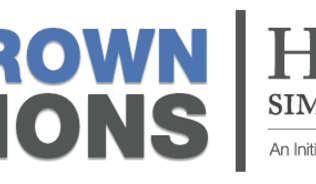Uses of Simulation Educator Needs Assessment Tool (SENAT)
Healthcare simulation educators play an important role in the training of medical learners. To be able to effectively provide instruction, these clinical simulation professionals must continually work to increase their own professional development. The website Evaluating Healthcare Simulation, created to provide healthcare simulation educators and researchers with freely available instruments (tools), shared more information about one such professional development resource – the Simulation Educator Needs Assessment Tool (SENAT). This HealthySimulation.com article discusses how the SENAT is designed for Simulation Educators to self-assess their needs in Simulation Professional Development.
Overall, Evaluating Healthcare Simulation defines a needs assessment as a crucial stage in the educational process that leads to changes in practice and should be part of the continuing professional development process. The website shares that this type of assessment should be the starting point in designing any formalized professional improvement curriculum. To effectively utilize a SENAT, healthcare simulation educators must respond to each item with an honest reflection of their knowledge and/or skills as the results can be used to identify and prioritize their professional development needs.
“In regard to the tool, I humbly just hope it is a tool that the sim world finds helpful. It was written to help establish a professional development roadmap for those who facilitate simulation, promote self-reflection, and provide data that can lead to psychologically safe mentoring conversations. Through the tool, we can determine where facilitators are in their sim knowledge and skills and where they want to go,” explained Teresa Britt MSN, RN, CHSE-A, Director of Education, The University of Tennessee Health Science Center, Center for Healthcare Improvement and Patient Simulation.
Sponsored Content:
According to Evaluating Healthcare Simulation, the SENAT was created to address a gap noted in the literature for sim professional development needs assessment. Additionally, the tool helps meet the need to provide data regarding an individual’s needs and desires for improvement. The SENAT can serve as a catalyst for simulation professional development conversations and works to assist in the creation of a professional development roadmap for simulation programs and/or individual simulation educators.
The healthcare simulation resource website added that this tool was initially developed by Dr. Teresa Britt and Dr. Kuan Xing at the Center for Healthcare Improvement & Patient Simulation (CHIPS) at the University of Tennessee Health Sciences Center. “The audience for this self-reporting survey is the Simulationist, broadly defined as an individual who is involved in the design, implementation, and/or delivery of simulation activities ( for example, educators, technologists, operations specialists, technicians).”
The website adds that, because of the wide variation that still exists in simulation job descriptions, this tool may be useful for those in academic or clinical simulation environments. Further, Evaluating Healthcare Simulation explains that in many organizations, there is a significant crossover between educators and operations personnel — or one person occupies both roles. Ultimately questions posed by the SENAT include:
- How many times have you facilitated a simulation activity in the past year?
- In general, how confident are you when you implement simulation activities?
- What resources do you use to learn more about simulation?
- Do you have any simulation experience that you want to share, positive and/or negative?
- Are there any other areas of simulation you would like to discuss?
Clinical simulation educators are also asked to rate their level of agreement with several statements. Examples of these statements are:
Sponsored Content:
- I use the Healthcare Simulation Dictionary as a reference to provide clear oral and written communication in my professional simulation practice.
- I adhere to the Society for Simulation in Healthcare (SSH) Simulationist Code of Ethics.
- I use healthcare simulation best practices to guide my decisions related to simulation
- When considering a new simulation educational activity, I begin with a needs assessment.
- I am able to write measurable objectives that are leveled to my learners.
- I am able to align the simulation modality with the learning objectives.
More About the Healthcare Simulation Standards of Best Practice: Professional Development
Established by the INACSL Standards Committee, this Standard of Best Practice shares how initial and ongoing professional development supports simulationists across their careers. As the practice of healthcare simulation-based education grows, the Committee explains that professional development allows the simulationist to stay current with new knowledge, provide high-quality simulation experiences, and meet the educational needs of the learners. Criteria necessary to meet this standard include:
- Perform an educational needs assessment that includes a gap analysis to provide the foundational evidence for a well-designed professional development plan.
- Participate in professional development activities that address desired learning outcomes and align with an individual’s role and the priorities of the institution.
- Reevaluate the professional development plan on a regular basis using formative and summative methods by both the individual and the organization.
Criterion 1: Perform an educational needs assessment for each individual that includes a gap analysis to provide the foundational evidence for a well-designed professional development plan.
Required Elements:
- Develop the educational needs assessment utilizing formative and summative assessment of the individual’s skill set based on educational standards, review of professional literature, current practices, and organizational needs. This should include self-reflection, assessment of current knowledge, and future goals.
- Identify gaps based on recognized resources, including, but not limited to: Healthcare Simulation Standards of Best PracticeTM, Certified Healthcare Simulation Educator (CHSE) Standards,8. Society of Simulation and Healthcare (SSH) Accreditation Standards,9. Association for Standardized Patient Educators (ASPE) Standards,11. Association for Simulated Practice in Healthcare (ASPiH Standards),12. National Organization of Nurse Practitioner Faculties (NOPF),16. the Canadian Certified Simulation Nurse Educators competencies (CASN).15.
Criterion 2: Participate in professional development activities that address learning outcomes and align with an individual’s role and the priorities of the institution. Required elements:
- Pursue professional development based on identified learning outcomes.
- Incorporate current best practices found in the literature into daily practice.
- Contribute to the body of knowledge in simulation (e.g., publications, editorials, empirical research, blogs, social media, and presentations).
- Integrate standards from professional organizations (e.g. Healthcare Simulation Standards of Best PracticeTM, CHSE Standards,8. SSH Accreditation Standards,9. APSE Standards,11. ASPiH Standards,12. National Organization of Nurse Practitioner Faculties (NOPF),16. CASN Standards15. and Healthcare Simulation Dictionary.14.
- Attend and contribute to healthcare simulation conferences at the local, regional, national, and international levels.
- Partner with colleagues in the field to present a session, poster, or workshop.
- Develop and lead a session, poster, or workshop.
- Develop a community of practice at the local, regional, national, and international levels.
- Foster peer relationships within the field of healthcare simulation.
- Engage with simulation experts who can serve as mentors, provide feedback, and contribute to continuous professional growth.
- Incorporate peer review and mentoring as a developmental strategy.
- Explore opportunities to collaborate with others in the field of simulation.
- Develop mentorship skills and foster the growth of others in simulation.
- Pursue professional certification through simulation organizations.
Participate in formal education programs in healthcare simulation such as certificates, academic degrees, and fellowships. - Ensure the organization supports the development of an actionable professional development plan that aligns with the individual’s role and the priorities of the institution.
Criterion 3: Reevaluate the professional development plan on a regular basis using formative and summative methods by both the individual and the organization. Required elements:
- Simulation professionals should commit to continued professional growth through reflection on current knowledge, skills, and abilities, and review of professional literature, current practices, and organizational needs.
- Resources for reevaluation and goal setting may include Healthcare Simulation Standards of Best Practice, and CHSE Standards. SSH Accreditation Standards. APSE Standards. ASPiH Standards. National Organization of Nurse Practitioner Faculties (NOPF). CASN Standards. and Healthcare Simulation Dictionary.
More About INACSL
The International Nursing Association for Clinical Simulation and Learning (INACSL) is the global leader in transforming practice to improve patient safety through excellence in healthcare simulation. INACSL is a community of practice for simulation where members can network with simulation leaders, educators, researchers, and industry partners. INACSL also provides the INACSL Standards of Best Practice: SimulationSM, an evidence-based framework to guide simulation design, implementation, debriefing, evaluation, and research.
Download the Simulation Educator Needs Assessment Tool
Lance Baily, BA, EMT-B, is the Founder & CEO of HealthySimulation.com, which he started while serving as the Director of the Nevada System of Higher Education’s Clinical Simulation Center of Las Vegas back in 2010. Lance is also the Founder and acting Advisor to the Board of SimGHOSTS.org, the world’s only non-profit organization dedicated to supporting professionals operating healthcare simulation technologies. His co-edited Book: “Comprehensive Healthcare Simulation: Operations, Technology, and Innovative Practice” is cited as a key source for professional certification in the industry. Lance’s background also includes serving as a Simulation Technology Specialist for the LA Community College District, EMS fire fighting, Hollywood movie production, rescue diving, and global travel. He and his wife Abigail Baily, PhD live in Las Vegas, Nevada with their two amazing daughters.
Sponsored Content:




















